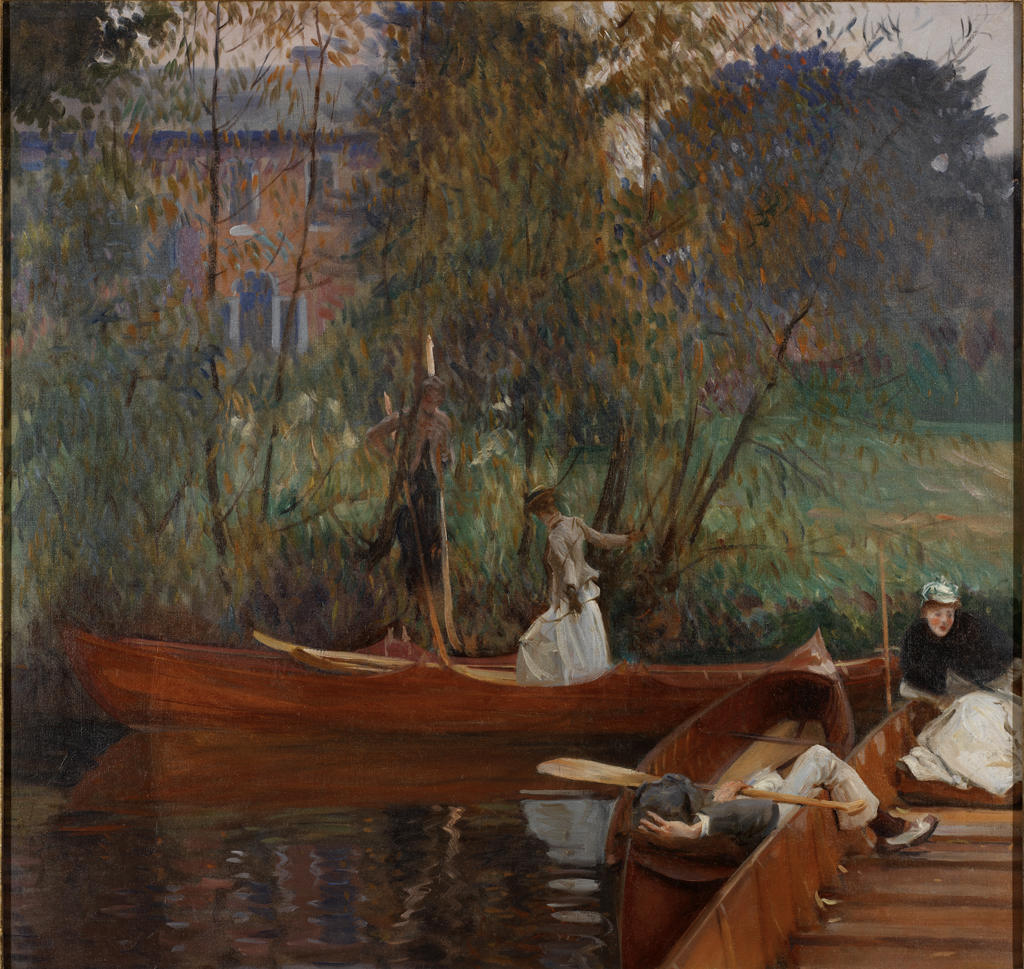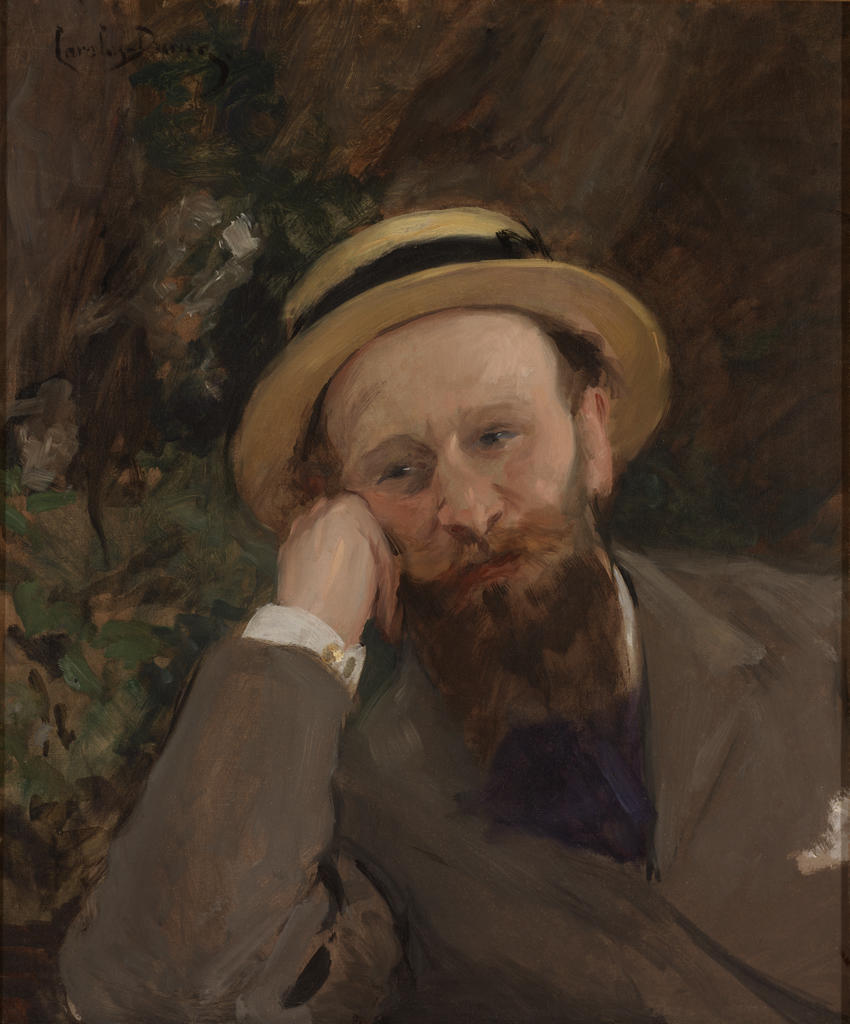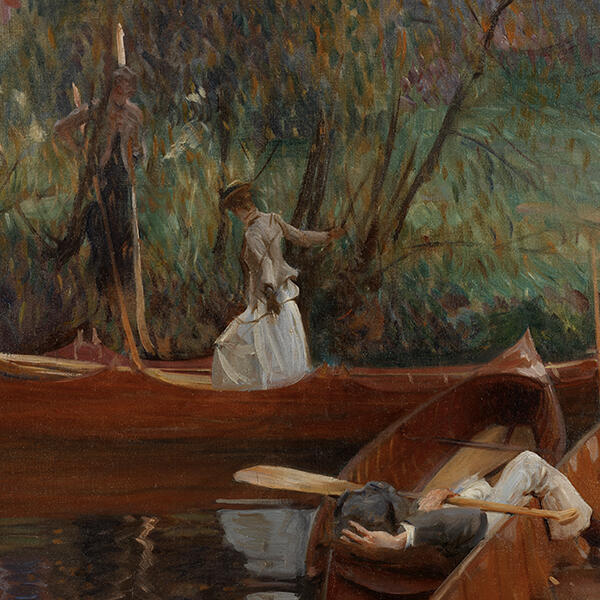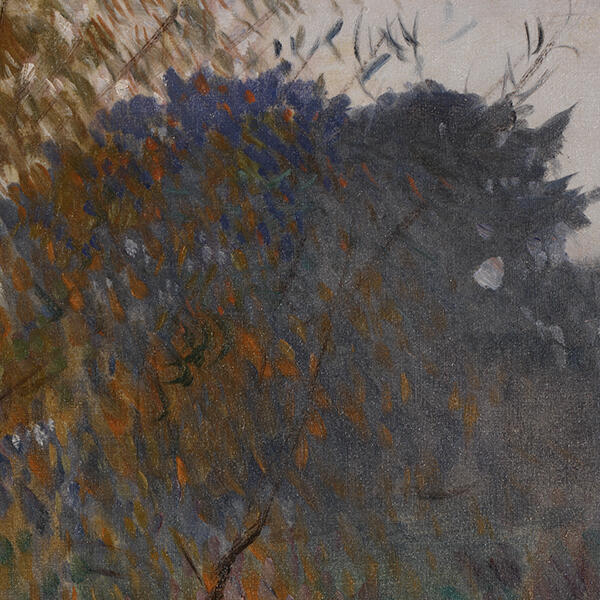Sargent painted A Boating Party during a late summer vacation on England’s River Avon. During the extended holiday with his sister Violet and friends Paul and Alice Helleu, he experimented with Impressionist composition and technique.
Unlike Johnson and Cassatt, who first trained in America, Sargent was exposed to advanced French technique from the outset of his studies. The first Impressionist exhibition had just taken place when Sargent arrived in Paris at the age of 18 and enrolled in the studio of Carolus-Duran, a close friend of Edouard Manet.
Born in Florence, Italy, Sargent had spent his entire life abroad, physically immersed in the history of European art and architecture. His artistic development in France was astonishing: by the spring of 1877 he had his first work accepted at the Paris Salon.
By the early 1880s, Sargent was a rising star whose inventive compositions and fluid paint-handling pushed the boundaries of convention. When critics slammed his daring Portrait of Madame X(1883–1884, Metropolitan Museum of Art), the barbs were not unlike those sustained by Manet and the Impressionists, for whom Sargent had a keen appreciation. After Manet’s death, Sargent was asked to spearhead a fundraising effort among American painters to purchase the artist’s Olympia (1862, Musée d’Orsay, Paris) for the Louvre. His counterpart, Claude Monet, solicited French artists for support, and a friendship developed as a result of their successful venture. At least twice in the 1880s, Sargent visited Monet at Giverny, and even painted Monet out-of-doors.
Both A Boating Party and a finished painting of Paul Helleu and his wife he made in the late summer of 1889 show Sargent’s interest in Monet’s dense, watery landscapes and his paintings of young women in rowboats and canoes on the River Epte. In particular, A Boating Party reveals some of the challenges he faced in developing an equivalent to Impressionist paint handling. His confidence is apparent in the placement of figures and watery reflections, in the asymmetric organization of the boats, and in his strong sense photographic cropping, but the murky stands of trees and the unfinished corner at upper right reveal his struggle to master the complexities of Monet’s brushstrokes.
A Boating Party, which he never exhibited, is a stepping stone in an artistic education whose growth spurts often took place in summer. He progressed rapidly, and one need only turn to his later work in watercolor to discover the rich vocabulary of brush marks he devised in response to nature’s changing effects.
Maureen C. O’Brien
Curator of Painting and Sculpture




